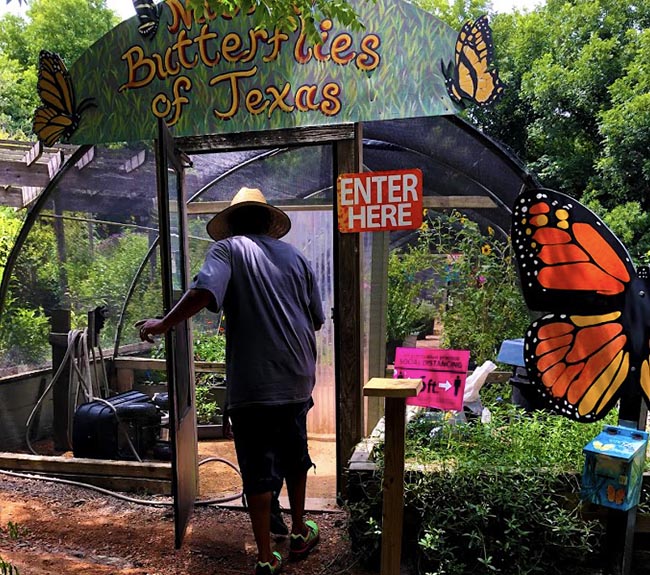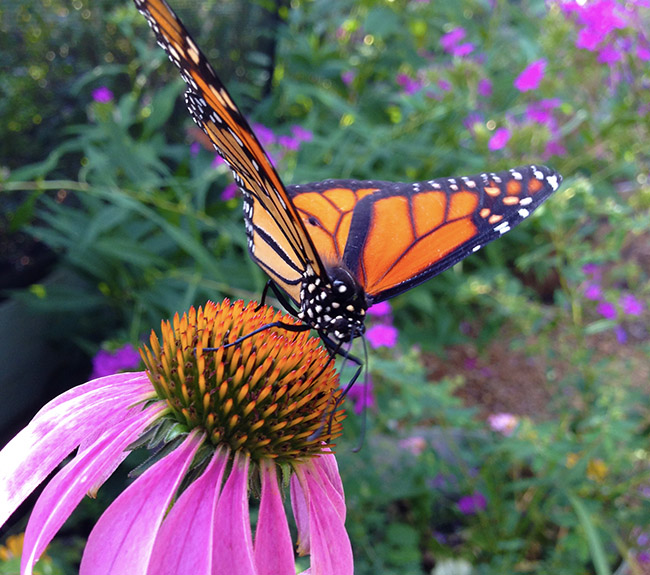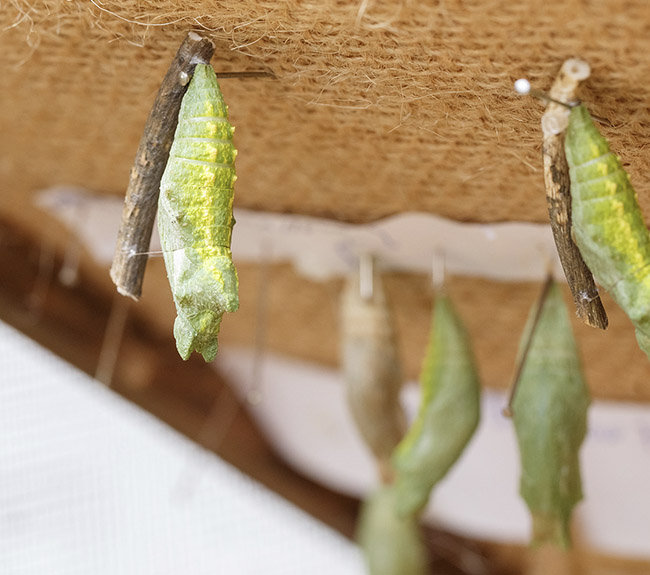Main Menu
Main Menu
The Native Texas Butterfly House will reopen June 7 – September 27.
Walk among free-flying native butterflies and other pollinators in our Native Texas Butterfly Garden.
Our butterfly garden is filled with host plants that naturally attract these lovely creatures. You may even find a few ideas to try in your own garden! This area is also a great setting for nature photography and portraiture (small fee applies).
The butterfly garden is accessible year-round; however, plant life and inhabitants vary seasonally.
Please note that the butterfly house will be open June 7th! If you’d like to help, please consider making a donation. Meanwhile, please enjoy our new Bugs LIVE exhibit through June 29!
The butterfly house includes native species, which vary by season and what is available from suppliers. Our butterfly garden is filled with host plants that naturally attract these lovely creatures.You may even find a few ideas to try in your own garden!
This area is also a great setting for nature photography and portraiture (small fee applies). Please note that the butterfly house is not open during the off-season. The butterfly garden is accessible year-round; however, plant life and inhabitants vary seasonally.

Visit the Native Texas Butterfly House and Garden, w hen open, with a General Admission ticket!
Attracting butterflies to your garden is easy. Your butterfly garden can be as simple or sophisticated as you choose. You can also add elements over time to provide better resources. If you don’t have a spot to plant things in the ground, you can even use containers. Your garden may also benefit a number of other important pollinators such as hummingbirds, bees or even bats.




Butterflies have several stages of development in their lives. To really support the butterflies, it is useful to provide the basic appropriate resources for each stage. This means they will need:
Each species of caterpillar (the larval form of butterflies and moths) feeds on specific and different plants all referred to as “host plants.” These plants are also where adult butterflies lay their eggs. Because each species has different needs, providing a variety of plant species will attract different types of butterflies.
Note: Be prepared for the caterpillars to nibble on the leaves. This is how they eat. If you’re uncomfortable with having plants that may not always look pristine as a result of caterpillars feeding on them, try tucking them in a less visible (to humans) location.
By planting a variety of nectar plants that are attractive to butterflies, you may encourage a greater variety of butterflies to visit your garden.
Adult butterflies feed on fluid called “nectar” that is made by flowering plants. Nectar is mainly made up of carbohydrates (sugars) and water; however, the concentration of sugars varies across plant species.¹ Small amounts of other chemicals can also be found. Because nectar composition can vary from plant species to plant species, different plants may be attractive to different species.
Top Native Perennials for Butterflies:
More Native Perennial Favorites for Butterflies:
Top Native Annuals for Butterlies:
More Native Annual Favorites for Butterflies:
Texas native small trees:
Non-native favorites**:
*Note that some sunflower species are annual and some are perennial.
**When possible, it is best to utilize native species.
Sources:
Nicolson, Susan W.; Nepi, Massimo (2007). Pacini, Ettore, ed. “Nectaries and Nectar; Nectar Components“. Springer Publications. pp. 8–9. ISBN 9781402059377.
Ley, Elizabeth L., Stephen Buchmann, Ph.D., Larry Stritch, Ph.D., and Gil Soltz. “Selecting Plants for Pollinators: A Regional Guide for Farmers, Land Managers, and Gardeners in the Prairie Parkland (Subtropical) Province.” Pollinator Partnership. Pollinator Partnership, n.d. Web. 06 July 2017.
Watch for scheduled programs–coming soon. Butterfly Talks are included in general admission and are free for Heard Museum members. Designed primarily for adults. Interested youth may attend with an adult. May not be suitable for children younger than 10 years.Talks are led by Melanie Schuchart, one of our key butterfly volunteers. Each presentation will last about an hour, followed by a walk through the butterfly house and garden.
Plants Monarchs Observed Using – 2020
Download this leaflet containing butterflies commonly seen at the Heard and information on butterfly gardening.
NRCS documents for pollinator conservation and enhancement
For Kids – Pollinators All Around printable coloring sheet – Pollinator Partnership
Book a garden talk for your group!
NEW! Butterfly and Insect Birthday Parties are now available while the Native Texas Butterfly House & Garden is open!
The Heard Natural Science Museum & Wildlife Sanctuary offers birthday parties for children (see party descriptions for age requirements) on Saturdays and Sundays by reservation. Children will explore the natural world both inside and out.
© 2024 Heard Museum Natural Science Museum & Wildlife Sanctuary
1 Nature Pl, McKinney, TX 75069 | Contact | Privacy Policy | Website Design by HMG Creative